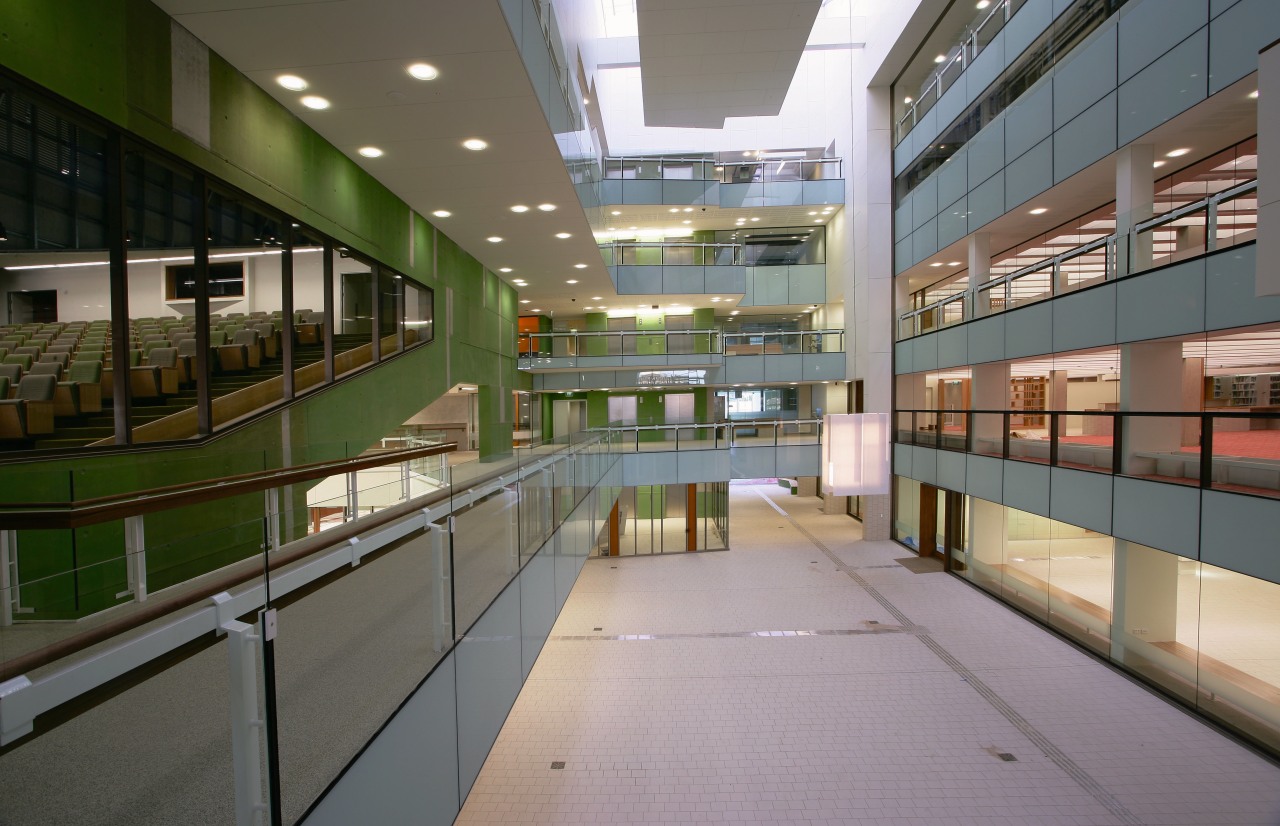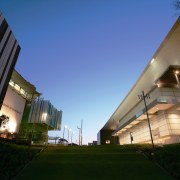CULTURAL ICONS
Design for the $291.3m redevelopment of the Queensland Cultural Centre in Brisbane's South Bank is driven as much by low-energy solutions as aesthetics
HOW EXPECTATIONS change. In today's environmentally conscious world, implementing sustainable technologies is no longer simply a nice touch, but a given. Public buildings often lead the way in low-energy design, and the Queensland Government's $291.3m Millennium Arts Project is no exception.
The Millennium Arts Project is Queensland's largest capital works arts project in over three decades, with ecologically sustainable developments key drivers throughout the design and building process. The project involved the construction of a new 26,000m² Gallery of Modern Art, Australia's largest museum of modern and contemporary art. It also involved the refurbishment and extension of the existing State Library and associated site works.
As managing contractor, construction company Bovis Lend Lease transformed the 3.5 hectare site into a world-class cultural centre, using its global construction experience to ensure that the project was environmentally sustainable during construction and beyond.
The refurbished State Library has doubled in size to 28,000m². It also includes a new fifth floor over the existing building, an auditorium, contemporary display spaces for heritage collections and expanded exhibition spaces, as well as a new reference section and additional services for children and indigenous peoples.
Associated site works included construction of new entrances for the existing Queensland Museum and Queensland Art Gallery, pedestrian walkways and viewing corridors overlooking the river, and car parking for 71 extra vehicles. Waste management, recycling, safety and community consultation were all included in the brief, as well as the preservation of a 100-year-old Poinciana tree saved during original construction of the Queensland Cultural Centre in the 1970s.
The immense scale of the project, along with Bovis Lend Lease's inclusion of sustainable initiatives, equates to huge energy and costs savings throughout the lifespan of the Gallery of Modern Art and State Library buildings.
Of these environmental initiatives, two stand out: a chilled beam air conditioning system and a river heat rejection system. The passive chilled beam system will reduce energy consumption in the State Library by up to 30%. Chilled water is pumped through cooling elements in the ceilings which, cool the rising air created by computers, visitors and staff. The cooled air then falls, creating a natural convection process of hot air rising and cold air falling.
The river heat rejection system pumps cool water from the Brisbane River, eliminating the need for on-site water cooling towers, which would normally evaporate large amounts of treated water.
As well as saving energy and water, the technology also removes the need for toxic chemicals in the cooling process and reduces the risk of Legionella disease.
Other green initiatives include using recycled water pop-up sprinklers with in-ground drip lines to produce water savings of 60%, copper sunshade screens for the library's repository walls, natural ventilation where possible, and energy-efficient active lighting.
During construction all on-site subcontractors and employees worked to a detailed waste management plan created by Bovis Lend Lease. As part of the plan, contractors recycled concrete rubble from the site as 20mm crushed rock to re-use as a building base course. Local materials were used, along with plantation timber and industrial waste in concrete. Metal, carpet and marble from the existing buildings were reused and feature throughout the project.
Converting the abandoned demolition site was one of the project's most significant challenges. It included decontamination of the former industrial area, removing 24,000m³ of contaminated material from the site.
Due to Bovis Lend Lease's waste reduction, reuse and recycling initiatives, more than 44,163m³ of site materials were recycled. This equates to 80% of all building and vegetation waste generated during construction 20% more than the original target.
As well as ensuring environmental sustainability, extensive community consultation focused on social sustainability to preserve the cultural and historic value of the site. It involved a broad range of community representatives, native landowners and other indigenous stakeholders, researchers, corporate, regional and rural representatives.
For more information, contact Christo Visser, business development manager Queensland, Northern Territory and Pacific, Bovis Lend Lease, Level 18, 240 Queen Street, Brisbane QLD 4000, phone (07) 3225 7100. Website: bovislendlease.com.au.
Story by: Trendsideas
Home kitchen bathroom commercial design








